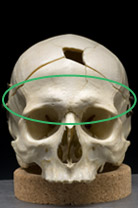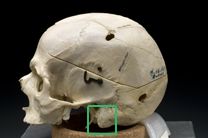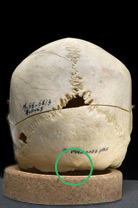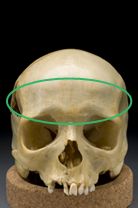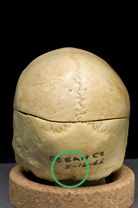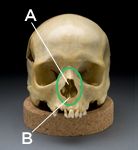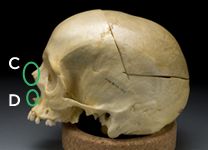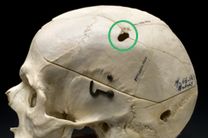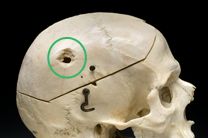Anthropological Views
Anthropologists can help identify a deceased from his or her skeletal remains bearing characteristics of ancestry, sex, stature, age and trauma. Conduct a couple of visual comparison techniques, explore Liliana Pereyra's case, and get a glimpse into the work of three anthropologists.
Zoomable images on this page require javascript and the Macromedia Flash Player.
Learning from bones
Bones bear numerous clues that who cane help anthropologists determine who the person was and how they died. When deciphered, these cluses may serve as evidence in a courtroom.
Biological sex
Take a close look at these two skulls. Compare the different views of the two—especially the areas marked. Do you see any differences that help you identify the sex of each skull? Now click on the male or female button and see if you got it right! View hints.
Ancestry
Skulls bear various characteristics that provide clues about the person's ancestry/race to experienced anthropologists. Now take a close look at the frontal and profile views of the nose area (nasal bone, opening, spine and sill) and guess the ancestry of this person. View hints.
Bullet entry and exit wound
There is a clear distinction between entry and exit wounds made by a bullet. Take a close look at each wound, and determine which is the entry wound and which is the exit. View hints.
Liliana's story
Justice for Liliana Pereyra, who disappeared in 1976 in Argentina, was served in April 1985 after the truth about her disappearance and death was unearthed by Clyde Snow and a small group of Argentinean anthropology and medical students in 1984.
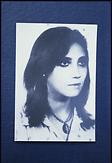
Liliana Pereyra's Case: Learn about Liliana's story and those who worked to bring justice for her.
Liliana Pereyra
Family of Liliana Pereyra; American Association for the Advancement of Science Archives
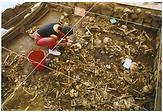
Bones as Witnesses: Listen to Dr. Snow's account of his work in Argentina and on other international human rights cases.
Excavation of a mass grave
Mercedes Doretti, EAAF
Anthropologists
Here, three anthropologists share their experiences in convicting military dictators, working with a museum collection, and identifying disaster victims as their findings are made available for cultural, legal, or scientific purposes.
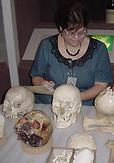
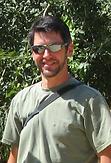
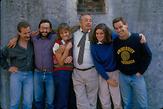
Some documents linked from this page are in PDF format and require Adobe Acrobat Reader. Videos on this page require either QuickTime Player or Windows Media Player.
Last updated: 11 July 2006
First published: 16 February 2006
Permanence level: Permanent: Stable
Content
